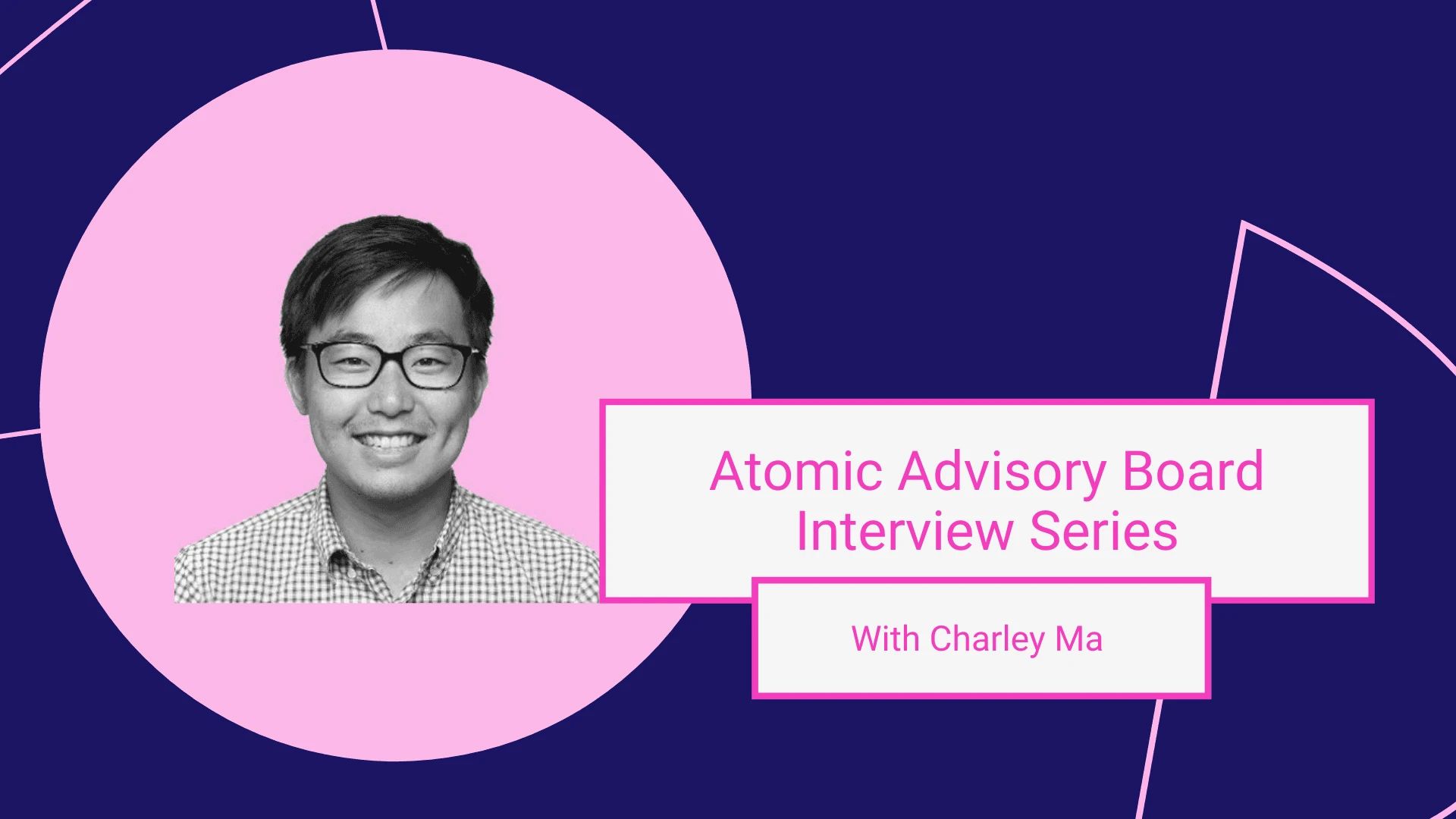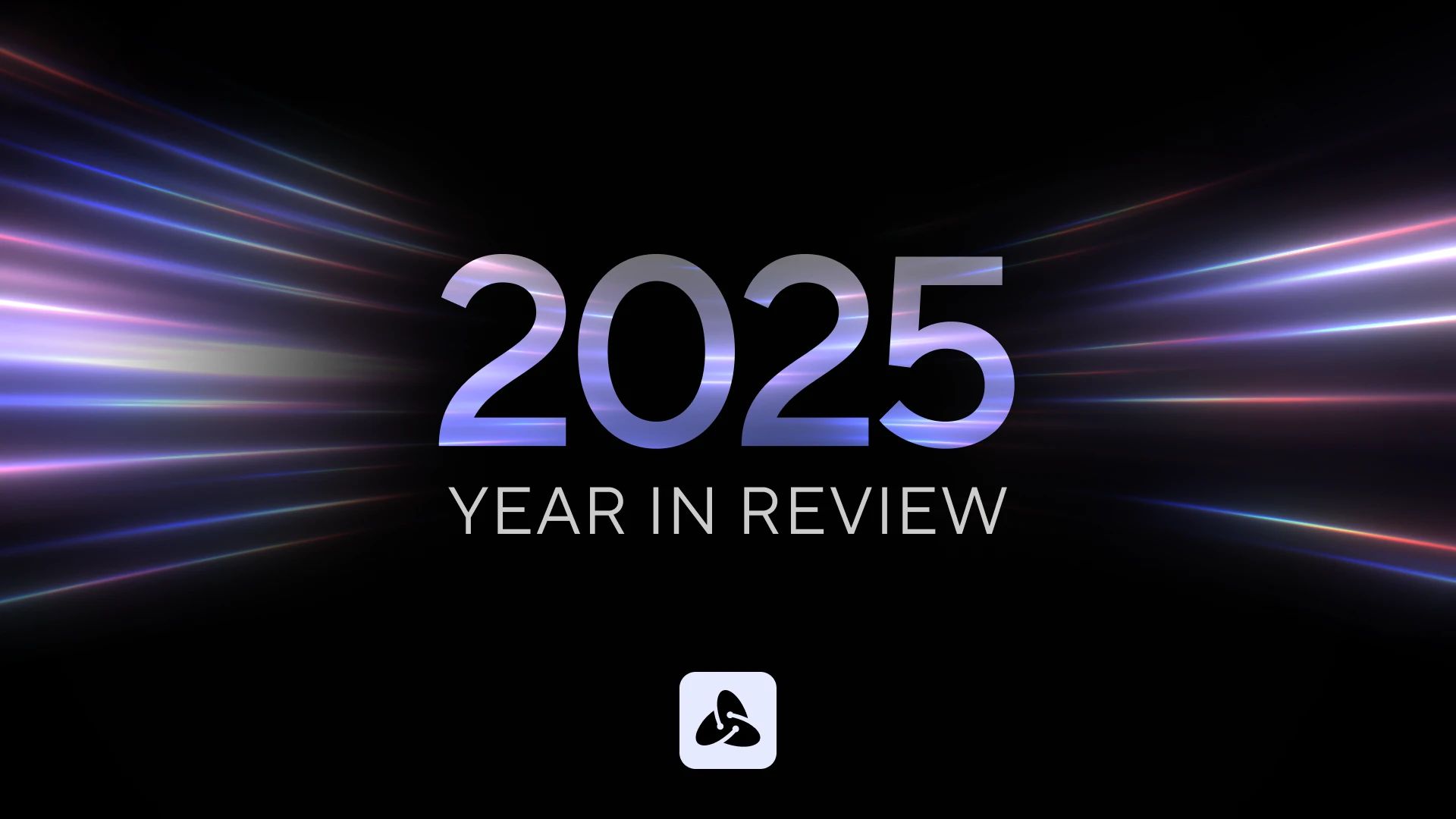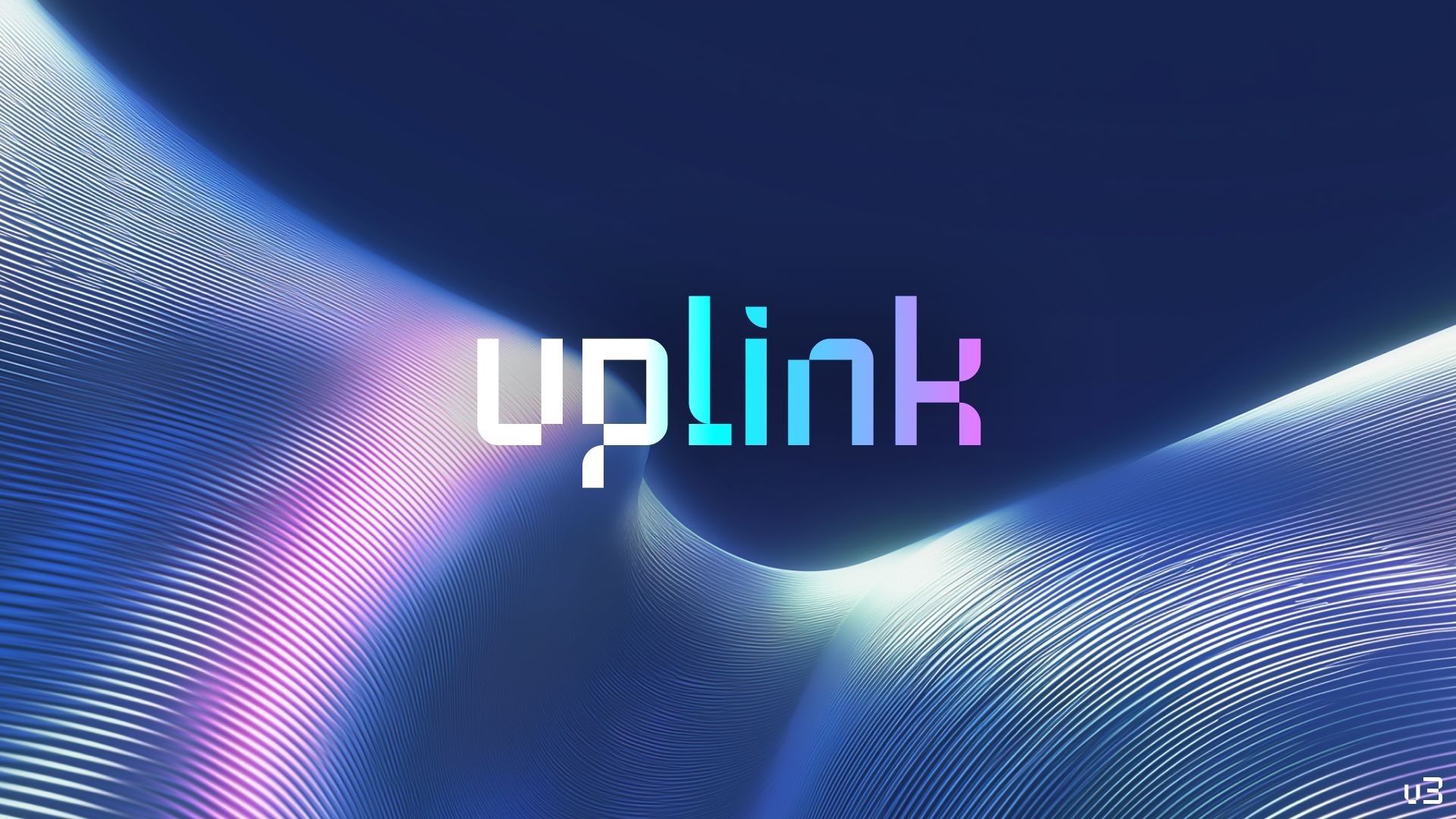Why creating an experience customers love is a durable advantage

Lindsay Davis
Head of Markets

Charley Ma was working at JPMorgan Chase in 2015 when he learned he’d landed a new job: he’d be the first business hire at a fintech infrastructure startup called Plaid. Obviously, the move was a savvy one for both Plaid and Ma. In his five years at the startup, he helped grow Plaid — which allows applications to seamlessly connect to users’ bank accounts — into a fintech unicorn. In 2020, he headed over to Ramp, helping the burgeoning corporate credit card startup grow to 100s of clients over the course of a year. Now, he’s moved onto the position of GM of Fintech at Alloy, an identity and KYC API and dashboard, which has also begun to rapidly grow.
Ma has seen the rise of fintech from the dead center of the industry and has a uni que perspective on where the market is going and what the customers of the future will be asking for. He writes a weekly column for Fintech Today and shares many more thoughts on his Twitter.
This year, Ma accepted a spot on the Atomic Advisory Board. We gave him a call to learn more about what it takes to build a b2b fintech that wins and where financial infrastructure can still be improved, redesigned, and disrupted by innovative startups.
Q: Your CV — at Plaid, then Ramp, and now Alloy — is a fascinating window into how fintech has innovated the rails and paincases in banking and personal finance. When founding a fintech, is the goal to hold on to that initial problem spark or to be flexible and follow what the market and customer tells you?
I think it’s both. My bias tends to be toward b2b fintech problems — b2c products like Snapchat or TikTok still feel a bit magical to me. Like, I have no clue on how would I ever come up with that as a problem set?
But my general framework is that once you get to product-market fit, you have to start asking: how do you continuously add tons of value into your customer relationships? The end goal is to understand your customers front and back so you can have an understanding of their priorities and what problems they face. If you have an interesting new product or a solution that solves a huge pain point for them, then they’re coming back to you every time. If you’re accumulating that value over time, then you’re going to win in that market.
There are always question marks as to: how big is the market? How many customers have that problem set? That’s a different conversation and can be a useful way to understand the limit on how big you can get. But when you’re starting off, the key is to find problem sets, have a 100x better product solution around that problem set, and then accumulate value over time. That’s why I say that it’s a bit of both: you can’t have the product and then just sit on it. If you find a market that’s big and interesting, there’s always going to be competition in that market. Honestly, if you’re the only company in the market, then I’d probably be a little bit concerned.
Nowadays, a lot of people think we were entering greenspace when we launched Plaid. A lot of people don’t remember how competitive the market was when we officially came out of beta in 2015. There were a ton of other startups, there were large incumbents — Intuit, Finicity, Yodlee. No one wanted to back us at our Series A because everyone didn’t think we were going to be big enough to be competitive. Obviously, we ended up executing really, really well, but also our framework was very much: we’re going to make sure that our customers love us, make sure that we’re continuously delivering value, and make sure that we are our customer’s favorite partner. Anytime they have a problem set, we want the first swing at solving it set for them. If you have that, then you have an interesting and durable advantage.
Q: Plaid and Alloy are both innovators that improve CX from behind the scenes, just like Atomic. These last few years of fintech have seen a lot of behind-the-scenes innovation — do you expect the next few to be more about innovating on top of the new infrastructure?
Well, initially, we saw the v1 wave of infrastructure. Plaid is still very much in the mix, but you had a lot of companies built on top of Marqeta, you had all your banking-as-a-service providers, you had that first wave of infrastructure that enabled founders to even think: “maybe I could launch a banking product.” Now that initial playbook has been written and the existing infrastructure means the path has been paved.
If you talk to the Simple founders, it took them years before they were able to get the first bank account live and get a debit card issued. Whereas, at my previous company, we were able to get a fully operational, fully fledged, competitive corporate card to market in less than a year, which is pretty wild. So, I think we’re going to see a ton of innovation in both b2c and b2b fintech — just lots of better financial products, which is pretty dope!
That being said, I do think there’s still a lot of opportunity on the infrastructure side. It’s been streamlined, but it’s still not easy to build on top of existing infrastructure. If you talk to anyone that’s built on top of Plaid or any other infrastructure, they’ll tell you it’s better that there’s a known playbook now, but it’s still not the easiest thing to do in the world. There’s still a ton of friction that exists within financial services and financial infrastructure. But now, there’s a lot more domain knowledge and understanding to go deeper into the financial systems and kind of rewire a lot of how money is moved and how data is transferred.
Atomic is a great example of that. Payroll has been around forever, but there hasn’t really been much innovation around payroll systems for years. It’s an interesting pain point that hadn’t yet been identified in the market. But with the proliferation of fintech, there’s demand for this infrastructure to be built, and no one’s tackled it before. Right now, there’s an opportunity to go deeper into a lot of the more archaic systems and actually bring them into the 21st century. I like to joke that when investing in financial services companies, it’s like: if you can figure out a way to bring some architecture and infrastructure into the 21st century, you have a huge company. It’s a very basic framework to look at, but I actually believe we’re going to see it proved out.
On the infrastructure side, there’s also this great feedback loop where a platform like Atomic continues to ship out new products and updates, which enables new use cases for companies to build on top of that new infrastructure or around that new data. These companies are going to build new stuff, and they’re going to demand for more products, more data, and more interesting platforms, which will continue to push like the innovation cycle.
The number one thing you can control as a company is the team you build. If you can’t keep up with the product velocity, that’s how you become legacy infrastructure. And we’ve seen some examples of that in infrastructure fintech where the team quality for some companies has decreased for whatever reason and the advantage or disadvantage compounds rapidly because, as an infrastructure provider, you’re constantly having to rearchitecture, you’re constantly having to like ship new stuff, identify new spaces, and just build quickly to keep up with the evolving market. The moment you stop doing that is the moment you become legacy infrastructure.
Q: Alloy, like Atomic, is focused on using innovative technology to streamline experience for consumers, but also obsessed with security and fraud prevention. Covid-19 accelerated the digitization of many businesses. Do you expect security to become a focal point of the next half decade as more industries move transactions and personal data online?
Yes! 100%. I saw this meme on Twitter that said: who led the digital transformation at your company? Was it your CEO, your CIO or COVID-19?
All of these banks were like, “Oh, it’s gonna take 10-20 years to launch an online account offering and do online account opening. That’ll be on our Roadmap 2030.” And all of a sudden, it’s like, “Actually, we’re launching it right now.”
Because of the sudden shift online, there are a few things I find really interesting. One, there’s this proliferation of alternative data and new data sources. Whether it’s connecting into your payroll or your transaction data, there’s more and more sources of data to use to get signal from the world.
The second thing is that consumers are demanding to have much more real-time experiences. The in-branch experiences were very slow and no one wants that. But even online, the older institutions hold onto some of those same principles. For example, the IRS shuts down for maintenance every evening. But why? The internet doesn’t shut down, right? There are a lot of these preconceived notions of offline and online that are still happening, but I think consumers are demanding more real-time experiences.
The third thing is that there’s a ton more data, which means you can’t be dependent upon the same systems that you did before when it comes to KYC and other security. How do I know this person is who they say they are? Are they going to be a valuable user to us or not? How do I make sense of this data? How do I make sure the data is being transferred in a secure and scalable manner? Amazingly, these are problems every single industry is now facing because of the online acceleration caused by COVID. And I believe it will only become more and more important over time as more companies and products become digital- and mobile-first.
Q: Plaid is a great example of a game-changing company that most people outside of banking and finance would’ve missed. Is there a technological or structural idea that you’ve seen over the last couple years that people might not yet recognize as a game-changer?
I will probably get torn apart for this, but I was into crypto and DeFi early on and then I got very not into it for a while with all the ICO stuff and the other fraud and scammers. But I’ve been getting back into DeFi again. There’s a lot of hype, but I do think that NFTs and this intersection of decentral finance has real legs. Also, I think there’s something around this whole creator economy aspect — there is this new class of worker. Historically, a creator would have an audience and there weren’t great ways to monetize that on the internet. Most of the value is being taken away by the platforms themselves, but increasingly, more and more platforms are offering ways to monetize that audience. I think there will still be more unique ways to monetize and more unique ways to transfer money and transfer value. That means there will be interesting opportunities to build infrastructure around this convergence of economy. Then, once you add in DeFi, things get crazy.
NFTs are this microcosm of, “Oh, great, I have an audience, and now I have a means to monetize that audience.” It’s not that different from trading cards and the artificial rarity in that market. So, there’s something there. I don’t know what it is, but there’s something there.
Q: What drew you to want to join the Atomic board?
It’s funny, I actually wasn’t planning on getting involved with any kind of payroll API companies. I was like, “I don’t know. It seems crowded. There are a ton of companies. There’s always a ton of VC interest, but it’s so hard to pick out who’s winning.” But, for me, the two biggest signals are, number one, the team: can you build a route? And I will say that Lindsay Davis joining actually was a really big signal. I was like, “Okay, if Jordan can start to put together that type of team then that compounds and that’s actually quite interesting.” As an early stage company, the one big thing in your control is the quality of the people you bring on and the quality of execution they can do.
Then, the second factor was just the fact that Atomic kept winning clients. It’s simple, but there is a cumulative advantage inherently tied to winning clients over your competition — winning more companies gives you more feedback, which gets you more logos and eventually just solves a lot of problems. That advantage starts to build over time and then compounds. I was trying to talk to a lot of other product people and execs in the market and everyone kept telling me Atomic had a secret sauce on the team and that they were just winning. It was very interesting.
Q: Our last question is one we ask every interviewee: what book or podcast do you recommend to younger founders in fintech to better understand this moment?
This one is my go-to bible: Payment Systems in the U.S. by Glenbrook Partners. It’s very boring, but if you are interested in building in fintech, I do think having an appreciation of all of the underlying crap that surrounds us in financial services is important.
Other than that, I actually don’t have a specific fintech-focused recommendation — but I really like Patrick O’Shaughnessy’s ‘Invest Like The Best.’ I’ll listen to every founder that’s on that podcast and there have been some great fintech founders on as guests.
My favorite episode is the one with Nick Kokonas, the Tock founder, who’s also the cofounder of Alinea, the restaurant in Chicago. He used to be a derivatives trader and then left to cofound the restaurant and he also built this platform. He has this super interesting viewpoint around the restaurant industry. I actually don’t like to read fintech stuff as much — it feels like I spend 24/7 on fintech, so I actually like to read more books and articles outside of fintech to try to see if there’s like other frameworks or ideas I can bring into how I view problem sets.
The most interesting podcast episode I’ve listened to recently on a friend’s recommendation is Episode #113 of the Jolly Swagman Podcast. The host used to be a founder and brings on very interesting investors and politicians and authors. The episode I listened to was with John Hampton, the chief investment officer at a hedge fund. The way he thinks about the world as an investor and how he goes deep on specific things is super fascinating.
I wouldn’t normally recommend a two-hour podcast, but every single minute I was like, “Oh, that’s very smart.” For example, he modeled out COVID and how he applied an investing framework on top of that. The big thing he talked about is the Dunning-Kruger Effect, which is basically that people who are experts in one thing believe they are experts in other spaces as well. There’s a ton of that within the investing and VC community. Hampton is very aware that, as a hedge-fund investor, he’s susceptible to the Dunning-Kruger Effect. I thought it was really interesting: how do you balance your Dunning-Kruger Effect, while also working to get an informed actionable opinion about a space where you’re not an expert?
Q: What are some examples of writing from outside fintech that have helped shape your management or creative framework?
I usually have specific books for specific problem sets. For example, my go-to management book is High Output Management by Andy Grove. If you want to be a manager, you have to read that one. I also really like Adam Grant’s writing around the idea of givers and takers. I use that framework when I’m thinking about business development and also how I position the people in my life.


